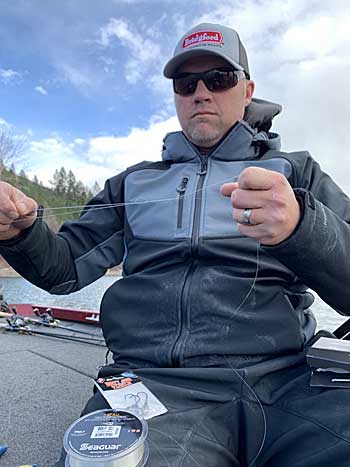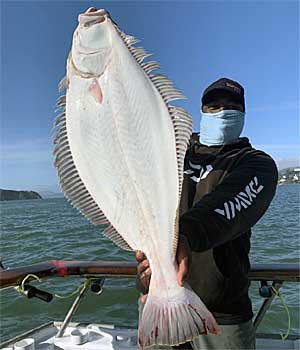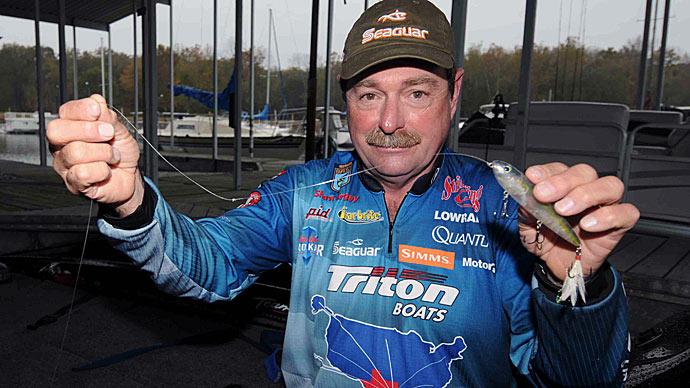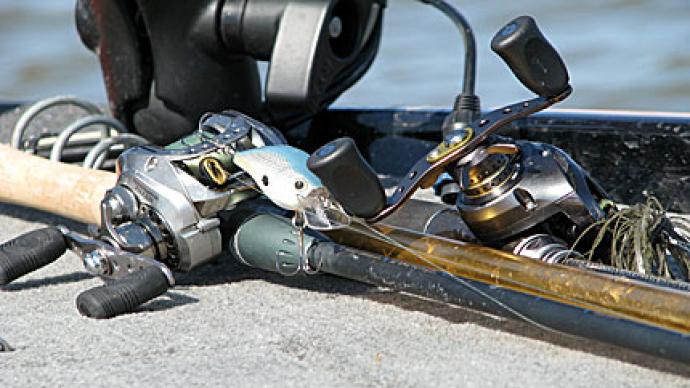
The fishing knot is a vital part of fishing, and choosing the correct knot for different techniques, lures styles, and line type is essential. Like many things in bass fishing, knot selection often comes down to personal preference and comfort levels tying the knots.
Professional bass anglers rely on the knots they tie to earn a living and have favorites they trust when money is on the line. Their reasons for the knot they choose vary from efficiency, strength, and trust built from years of fishing.
The following is a collection of some of the favorite knots of the longtime professional anglers Ish Monroe and Luke Clausen and why they decide to use one knot over another.
Connecting Line to Lure
Of all the knots in bass fishing, the Palomar would rank near the top of the list for weekend anglers and pro anglers.
California pro Ish Monroe is a fan but also mixes in the San Diego Jam knot.
"I've tied the Palomar my entire life, and it is super simple to tie," he adds. "It is straightforward to tie, and you can do it without thinking about it. The San Diego Jam is the only other knot I trust to connect to a lure. Both are more than strong enough when I am bass fishing or when I am out on the ocean chasing giant fish."
Major League Fishing pro Luke Clausen will alternate between the Palomar and a knot called the Berkley Braid Knot. When he decides one or the other depends on how he is fishing and what lure he is using.
"The Palomar is easy to tie, and it is a good knot," he begins. "I'll use it when fishing a ChatterBait, crankbait, or topwater because it is so fast to tie. The drawback is that I feel it doesn't absorb shock as well as the Berkley Braid Knot."
The instances when he prefers the Berkley Braid Knot are when fishing techniques that necessitate hard hooksets at closer range. Pitching plastics to cover and using jigs are twice when he prefers this knot over the Palomar.
"You are more likely to break the Palomar just because it doesn't absorb the shock the same," he believes. "I've even seen it where you flip a fish in and grab the line, and the knot breaks. That makes me more comfortable tying the Berkley Braid Knot sometimes, even though it takes longer to tie."
Joining Braid to Fluorocarbon

The popularity of fishing braided line with a fluorocarbon leader has exploded in recent years, and the debate on which knot to use is a common question among anglers. Professional anglers use various methods to join the two line types.
Clausen has recently switched to the FG Knot after years of tying a knot known as the Tony Pena Knot.
"The FG Knot is much harder to get the hang of and takes a lot longer to tie, but I feel it is worth it," he says. "I've had the same leaders tied on my reels for the past few trips and haven't had to retie them at all."
His reasoning for switching to this knot has to do with efficiency on the water.
"The problem with the Tony Pena knot and other knots that I have tried is that when you get hung up, the line will break at the leader knot," Clausen says. "If that is your weakest connection, it defeats the purpose. I don't want to stop and retie a leader every time that happens."
Monroe utilizes two similar knots, Alberto and Albright, and will alternate between the two based on his leader length.
"The Alberto is a bigger knot, and I'll use that with a heavier line or if I am using a shorter leader like when I am saltwater fishing," he says. "The Albright is a more streamlined knot, and I use that when I am using a longer leader, and the knot is going through the guides, and I need it to be a thinner connection."
Flipping, Pitching, and Punching
While the pros may vary in their preferences for different knots to combine lures to line or when using braid to a fluorocarbon leader, they both agree on using a Snell Knot for heavy cover fishing with big tungsten weights.

Monroe, famous for his skills in punching matted vegetation, says that a Snell Knot is a must.
"Anytime I am using a straight shank flipping hook and big weight, I tie a Snell Knot," he says. "The way the hook is tied allows the point to easily 'pop' up when you pull on the line. It is a must, and you hook fish better."
Clausen agrees with Monroe, with one exception, and that has to do with the size of the flipping weight he is using.
"If I am using a 3/4-ounce or bigger tungsten weight, the Snell Knot is the way to go," he says. "The surface area of the weight is big enough to put pressure on the hook to get it to stand out and get you better hookups. They don't have enough size for smaller weights to make it worthwhile."
Plenty of different knots are used in bass fishing, and picking the right one is often due to a personal preference or angler's fishing style. Professional anglers Luke Clausen and Ish Monroe each have decades of experience fishing and choose what works for them and allows them to be more efficient on the water.




